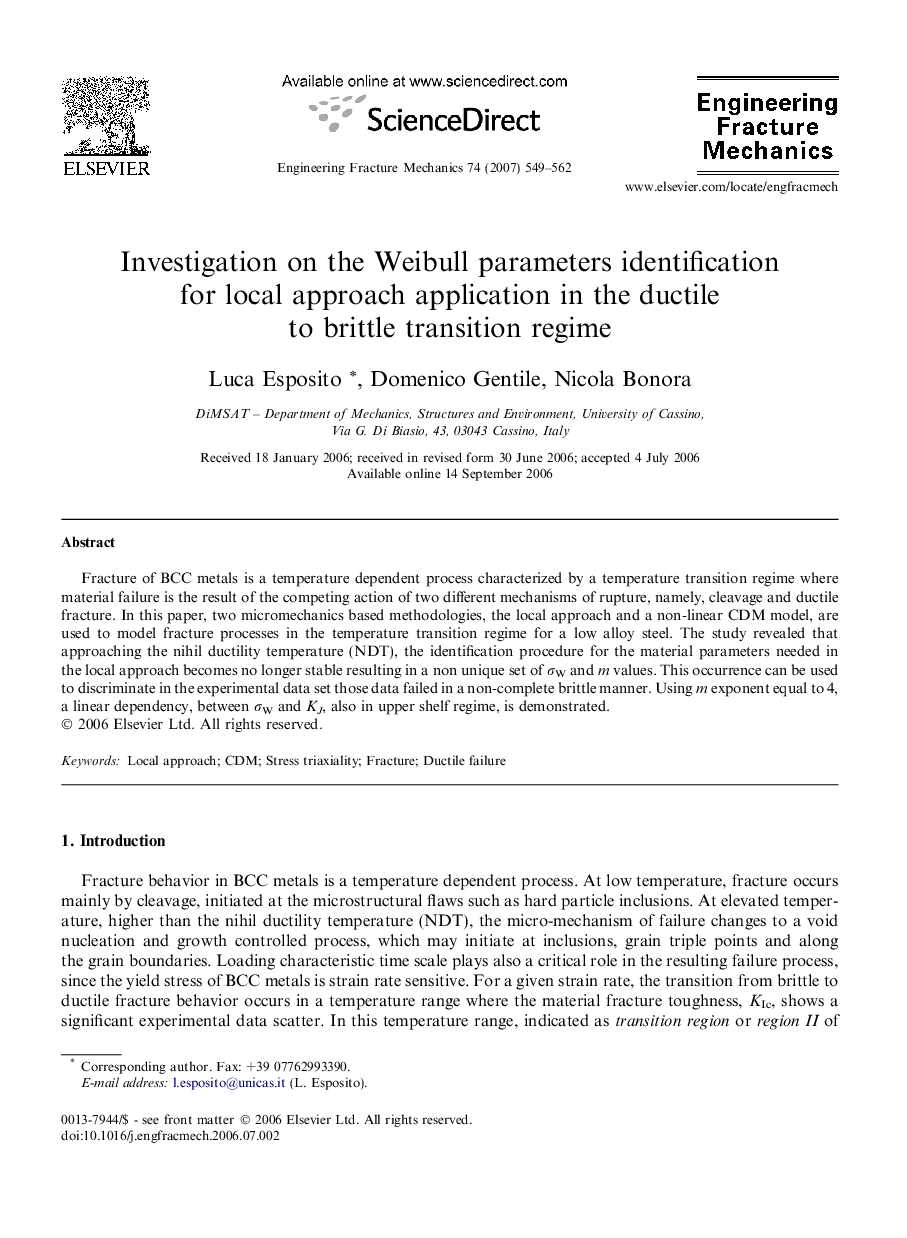| Article ID | Journal | Published Year | Pages | File Type |
|---|---|---|---|---|
| 775852 | Engineering Fracture Mechanics | 2007 | 14 Pages |
Fracture of BCC metals is a temperature dependent process characterized by a temperature transition regime where material failure is the result of the competing action of two different mechanisms of rupture, namely, cleavage and ductile fracture. In this paper, two micromechanics based methodologies, the local approach and a non-linear CDM model, are used to model fracture processes in the temperature transition regime for a low alloy steel. The study revealed that approaching the nihil ductility temperature (NDT), the identification procedure for the material parameters needed in the local approach becomes no longer stable resulting in a non unique set of σW and m values. This occurrence can be used to discriminate in the experimental data set those data failed in a non-complete brittle manner. Using m exponent equal to 4, a linear dependency, between σW and KJ, also in upper shelf regime, is demonstrated.
